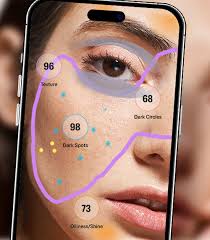Health and Beauty: Growth, Tech, and Personalization

Q1. Could you start by giving us a brief overview of your professional background, particularly focusing on your expertise in the industry?
I’ve had the privilege of working across multiple sectors—financial services, telecoms, utilities, and retail—always with a focus on building brands and accelerating digital transformation. Most recently, I served as CMO at Boots, where I led a significant marketing and digital modernization program. That included refreshing the Boots brand under a new purpose, “With You. For Life”, evolving the Advantage Card, and introducing new in-store and digital services. A real highlight was the launch of No7 Pro Derm Scan, a diagnostic tool that brought advanced, AI-powered skin analysis into stores and online, giving customers personalized product recommendations. My passion has always been connecting data, creativity, and purpose to deliver strong brand and commercial results.
Q2. How is sustainability influencing customer choice in the health and beauty space? Are clean labels, cruelty-free, or refillable packaging impacting sales mix?
Sustainability has shifted from a niche consideration to a mainstream purchase driver. Consumers—particularly Gen Z—are prioritizing clean ingredients, cruelty-free products, and refillable or more sustainable packaging when making decisions. During my time at Boots, No7 led the charge on refillable product launches, while Soap & Glory focused on sustainable packaging innovations such as recyclable materials and plastic reduction. The key is authenticity. Today’s customer can spot greenwashing a mile off, so it’s about embedding sustainability throughout your operations and communicating it clearly and honestly.
Q3. Are tools like virtual try-ons, skin diagnostics, or AI-driven shopping assistants gaining mass acceptance?
Yes—these tools are no longer optional; they’re a core part of the beauty and health shopping experience. No7 Pro Derm Scan is a great example: in its first year at Boots, over 1 million scans were completed, and customers who used the tool had significantly higher engagement and average basket size than those who didn’t. These technologies don’t just drive sales—they build confidence and trust in brand recommendations. Similarly, virtual try-ons and AI-powered assistants have become table stakes, especially for online shopping, as they reduce friction and personalize the experience.
Q4. How has the overall market for health and wellness retail evolved in size over the past 3–5 years? Are we seeing consistent double-digit growth or a shift in spending patterns?
The market has grown substantially, although growth rates differ by segment. Skincare, vitamins, and supplements have performed strongly as consumers embrace preventative health and self-care. Beauty dipped during COVID but recovered quickly as social and work occasions returned. While not every category has seen double-digit growth, the underlying shift toward wellness is here to stay. Customers now expect brands to combine science, efficacy, and purpose—so trust and transparency have become as important as price.
Q5. Which underpenetrated customer segments or health needs do you see as most ripe for category expansion?
Men’s health and grooming are still underdeveloped versus their potential. Midlife and later-life wellness is another huge opportunity—particularly menopause support, which is why I’m proud of the work Boots did under my leadership with GenM, the menopause partner for brands. Together, we helped normalize the conversation, expand product ranges, and make it easier for customers to find solutions in-store and online. There’s also major potential in personalized health and beauty solutions, driven by diagnostics and data. The success of tools like Pro Derm Scan shows how hungry consumers are for tailored advice, and the next wave will include nutrition and holistic wellness solutions.
Q6. When you’re mapping category performance or brand loyalty shifts, which peer brands or retailers do you find yourself most often benchmarking against?
It’s a blend of traditional competitors and innovators. In the UK, Boots has often benchmarked against Superdrug, but globally, Sephora and Ulta set the bar for experience and loyalty. Amazon remains the benchmark for convenience and fulfillment. And increasingly, platforms like TikTok Shop are shaping the beauty landscape—its rapid rise and ability to blend entertainment with commerce is reshaping how younger consumers discover and buy products. I also look beyond the category: fashion and grocery often lead in personalization and digital engagement, which are now critical in health and beauty.
Q7. If you were an investor looking at companies within the space, what critical question would you pose to their senior management?
I’d ask: How are you preparing for the next wave of consumer expectations? That includes digital innovation, personalization, sustainability, and supply chain resilience. These aren’t separate priorities—they’re interconnected. Customers now expect a seamless, purpose-driven experience, and companies that can’t deliver on that risk being left behind. The winners will be those who align purpose and performance into one coherent strategy.
Comments
No comments yet. Be the first to comment!
